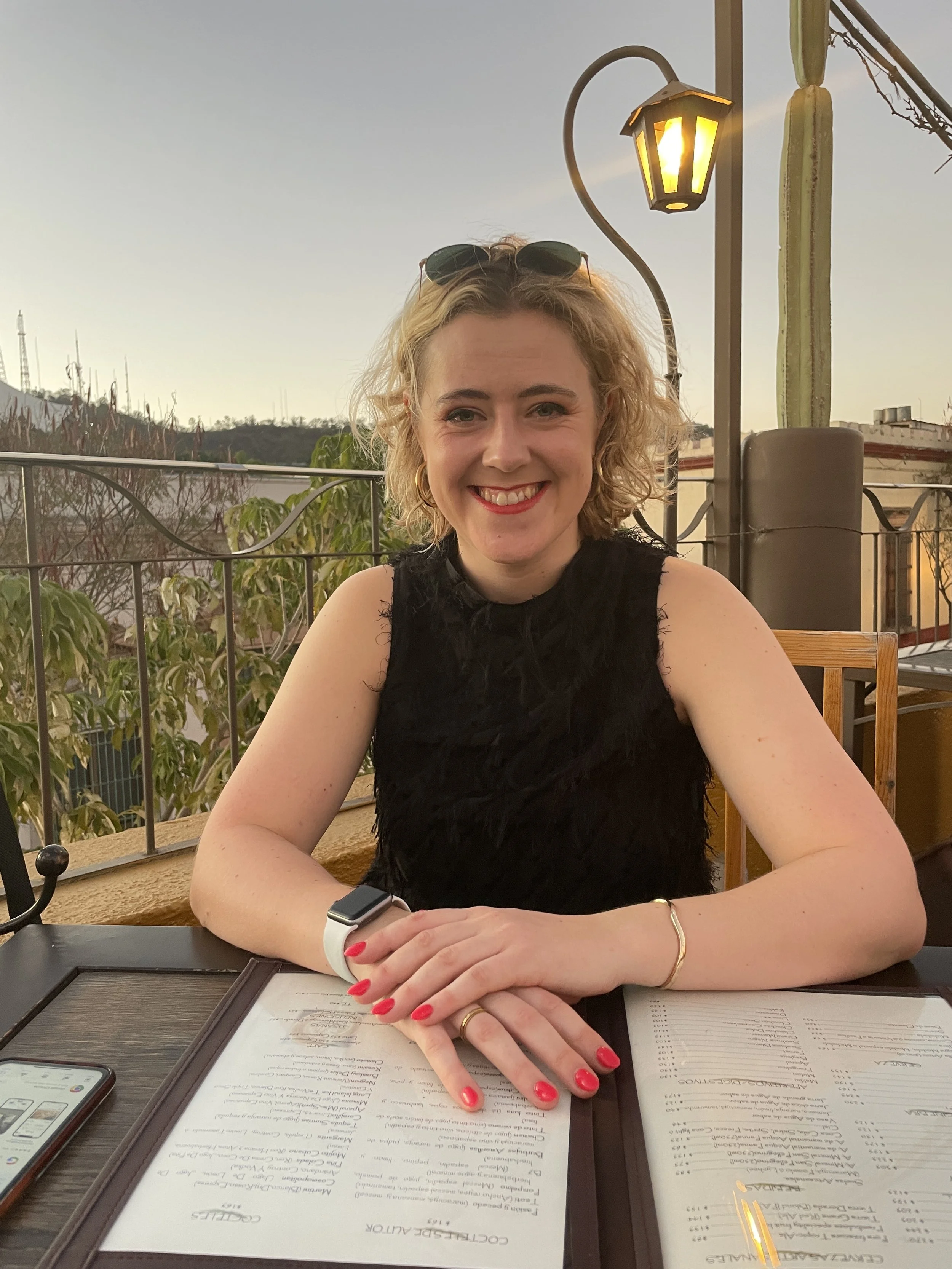Understanding Breast Density and What It Means for Women's Health
The historic and systematic lack of research and funding into women's health has left many women feeling disempowered and uninformed about their bodies. Breast density is just one example of this knowledge gap, which has been amplified by societal attitudes and the stigmatisation of talking about women's health, from menopause to menstruation. Dense breasts are a huge issue for mammograms, which then has severe implications for breast cancer diagnosis. Considering around 50% of women have dense breasts, why are these issues not more widely known?
I have long been passionate about women's health, but my recent venture into working in 'femtech' has opened my eyes to the scale of the issue. For those who don't know, the booming healthtech industry has given birth to 'femtech', a term used for tech companies working in women's health. From temperature-monitoring earrings for cycle tracking to diagnostic period pads, these companies aim to change the narrative for women. One such company is Micrima®, a medtech company based in Bristol, hoping to disrupt the system in breast cancer diagnostics. Recently starting a new role within this industry, I have become acutely aware of the need for more research, information and education about women's health so that we can make informed decisions about our bodies.
Breast cancer is one of the more well-researched areas in female reproductive medicine, but, despite this, there are many issues with the current system for breast cancer detection. Breast cancer is the most common form of cancer, with a lifetime risk for women in the UK of 1 in 7. Personally, these statistics translate to two women in my immediate family having survived breast cancer. The current system for diagnosing breast cancer is the mammography screening program, which invites women for an X-ray scan of their breasts once every 3 years after they turn 50, until the age of 71. At first glance, this seems entirely logical. The system has been in place since 1988, it must be effective. But why are so many women dying of breast cancer? Why are their tumours not being found earlier? How could something designed to detect cancer and save lives be so problematic? Two words. Breast Density.
Breast density refers to the relative amounts of fibro-glandular tissue and fatty tissue that make up a breast. Dense breasts have a higher percentage of fibro-glandular tissue and lower amounts of fat. There is no way to tell density from the look or feel of the breast. A woman's breast density is influenced by a variety of factors, mainly genetics but lifestyle, age, ethnicity, environment, hormones and reproductive history also contribute. We know that 50% of women have dense breasts. We also know that every breast is different.
Having dense breasts means it is hard to see cancer on a mammogram. On a mammogram, both tumours and dense tissue appear ‘white’ in the scan, as they have similar densities. This means that it is often hard for radiologists (specialised doctors who read the scans) to see if a woman with dense breasts has cancer, as the dense tissue masks the tumour. Women with high breast density also have a higher risk of developing breast cancer than women with low breast density. Despite these additional risks and breast density being listed on the NHS website as a risk factor, currently, there is no routine way to determine breast density until a woman’s first mammogram at age 50. Even then, healthcare professionals are not required to give a woman this information and do not typically provide this readily.
Mammograms miss around 20% of cancers. Within my first week at Micrima, I saw numerous stories of women attending screening and their cancer remaining undetected due to their dense breasts. 98-99% of women will survive breast cancer when it is still localised in the breast. Once the cancer is diagnosed at stage 4 and has spread to other areas of the body, this drops to 26%. With early diagnosis so crucial for survival rates and breast density being an important risk factor, why are women not being informed if they have dense breasts? Breast density is not included in standard online breast cancer risk calculators and seemingly, it is not common knowledge in the UK. In the UK women can expect a letter after their mammogram either giving the ‘all-clear’ or calling them back for further testing. The letter contains no information about breast density, or how difficult it was for the radiologists to conclude this. Women with high breast density are often called back for further testing, purely because the radiologists reviewing the scans couldn’t see if something was wrong. They are not informed they are being recalled due to their dense breasts. Equally, under the current system, thousands of women with dense breasts are being given the ‘all clear’ with no indication of the extra risk they carry, or that due to their tissue type, there is an increased risk their cancer could have been missed.
Conversely, breast density and the associated risks are well-known in the US. The FDA (US Food and Drug Administration) has recently made it mandatory for women to be told about their breast density after a mammogram and the risks associated with this, but the UK and EU have made no such advances. Some states have also made it mandatory that women with dense breasts are offered additional screening methods to help with diagnosis.
Other scanning methods are available for breast cancer detection, some of which are more effective on dense breasts, such as contrast-enhanced mammograms, MRI, ultrasound and tomography (CT scans). Women with a family history of breast cancer or presenting symptoms before age 50 are often referred for supplemental screening such as these. Everyone else is referred for the same standard 2D mammogram at age 50. Many researchers and organisations have recommended introducing alternative scanning techniques into the system and research is still ongoing. The Sarah Harding Foundation is currently funding a study on identifying early risk factors for women, including those with high breast density and younger women who do not have access to screening, and inviting them for annual scans, rather than every three as standard. While the issues are gaining traction, progress is slow. When I spoke to Micrima’s clinical affairs manager, she commented that she was discussing issues with breast density in clinic 30 years ago, when she first started working as a radiographer.
One of the reasons mammograms are only recommended at age 50 and over is because breast density decreases with age, so statistically, density should be less of an issue. But this is an arbitrary number. Sweden screens from age 40 and every two years rather than three. Switzerland is phasing out their mammography programme as they have deemed it does more harm than good. Every woman, body and breast is different. We need to make our screening system more personalised and risk-based.
Micrima hopes to achieve this with their novel device that safely measures breast density in one minute. With this device integrated into the current system, women could be fully informed about their breast density and the associated risks from a younger age and be offered the right scan for their tissue type first time. Micrima also aims to raise awareness of the problem and increase education on the subject. They have some amazing stories on their website from women who have experienced a late diagnosis due to their breast density, read them here Mi~Story — Micrima.
How can we help change this? Tell your friends, build awareness, be informed, be curious - about your body and the system. The more openly we can talk about these issues and the more awareness we can raise, the more likely the system is to change. If you go for a mammogram, ask for your breast density. Asking the question and being curious will add pressure for change. The US has taken steps forward and we need to increase the pressure to do the same. We need to know our bodies on an individual scale, to drive change globally.
Women should check their breasts every month - please also refer to CoppaFeel! | Check Your Chest | Breast Cancer Awareness Charity for information on how to check your chest. If you would like any more information about breast density, please go to www.breastdensity.org, a dedicated site to raising awareness about breast density.
If you have a story about breast density and would like to share with Micrima, please email info@micrima.com for more information.
Written by Abby Allwood
Abby Allwood is a writer whose interests blend scientific work in the medical technology industry with more right-brain pursuits in handmade arts and crafts. She loves traveling the world, and capturing moments on analog film.









